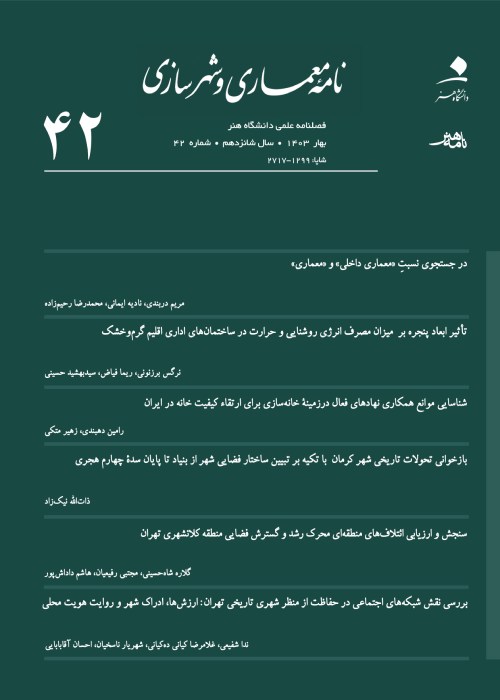A Comparative Analysis of Regional Inequalities Among Neighboring Provinces Case Study: Hamedan and Markazi Provinces
Author(s):
Abstract:
One of the problems that most of the developing countries encounter with is the regional disparities or spatial inequalities. Regional disparity means divergence or inequality of characters، a phenomenon or a process of having specific territorial allocation that occurs at least in two entities of the territorial structure. Increased regional disparities lead the society to political unrest and cause irregular immigrations. Therefore، spatial inequality leads to many negative consequences. Thus reducing regional inequalities in order to achieve justice should be seriously considered by policy-makers and planners. Therefore، countries are seeking for development based on justice and equality. After the Islamic Revolution in Iran، eliminating regional disparities has been emphasized in national policies like Vision 1404، Islamic Republic of Iran''s Constitution، 5-year development plans etc. The purpose of this paper is to examine the problem of regional disparities in Hamedan and Markazi provinces in Iran. These two neighboring provinces have many differences with one another. Hamedan is one of the country''s agricultural hubs and Markazi province is a major industrial pole in the country. Moreover their population density، rate of urbanization، share of GDP، migration flows، environmental status etc. are different. This research tends to measure regional disparities among these two provinces. Identifying regional disparities as a multidimensional phenomenon، enables governmental and non-governmental organizations to identify backward areas and consider programs to fill the gap among the different areas of these regions. Sustainable development has been chosen as research''s theoretical framework and regional disparities indicators have been extracted based on economic، social and environmental dimensions. For evaluation of disparities، multivariate statistical methods such as factor and cluster analysis have been applied. Economic indicators have been divided into two categories: employment structure and economic potentials. Socio-cultural indicators have been divided into three categories: demographics، socio-cultural infrastructures and health conditions. Environmental indicators have been divided into two categories: environmental potentials and environmental hazards. In sum، based on the conceptual model، in order to measure regional disparities، 40 indicators were selected from the review of related literature and taking into account regional characteristics and also data availability. These indicators were entered into a factor analysis model and 32 indicators and seven factors، which were highly correlated with regional disparities among these two provinces were extracted. These seven factors include: economic potentials and employment in economic sectors، employment structure، demographics and literacy status، health conditions، cultural characteristics، environmental features and forest lands. Then counties were clustered into five levels by cluster analysis. Mahallat county in Markazi province is the most developed township while Kabudar Ahang county in Hamedan province is the least developed one. Based on the outcome of the development level of Hamedan and Markazi’s counties، disparities among the two provinces were analyzed. The result showed that in three dimensions of development (economic، social and environment) Markazi province is more developed than Hamedan and their disparity is significant. It can be said the counties with their economy based on industry and services are more developed than agriculture-based counties.
Keywords:
Language:
Persian
Published:
Journal of Architecture and Urban Planning, Volume:8 Issue: 15, 2015
Pages:
113 to 138
magiran.com/p1444482
دانلود و مطالعه متن این مقاله با یکی از روشهای زیر امکان پذیر است:
اشتراک شخصی
با عضویت و پرداخت آنلاین حق اشتراک یکساله به مبلغ 1,390,000ريال میتوانید 70 عنوان مطلب دانلود کنید!
اشتراک سازمانی
به کتابخانه دانشگاه یا محل کار خود پیشنهاد کنید تا اشتراک سازمانی این پایگاه را برای دسترسی نامحدود همه کاربران به متن مطالب تهیه نمایند!
توجه!
- حق عضویت دریافتی صرف حمایت از نشریات عضو و نگهداری، تکمیل و توسعه مگیران میشود.
- پرداخت حق اشتراک و دانلود مقالات اجازه بازنشر آن در سایر رسانههای چاپی و دیجیتال را به کاربر نمیدهد.
In order to view content subscription is required
Personal subscription
Subscribe magiran.com for 70 € euros via PayPal and download 70 articles during a year.
Organization subscription
Please contact us to subscribe your university or library for unlimited access!


